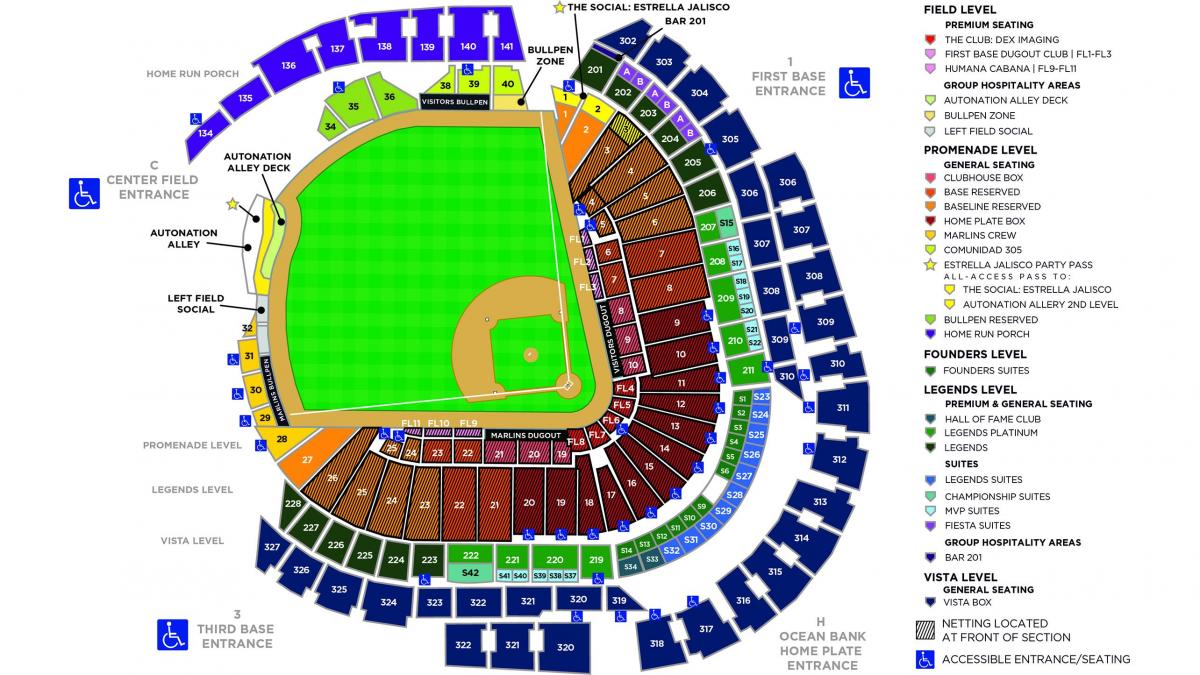search
Marlins park map
Marlins parking map. Marlins park map (Florida - USA) to print. Marlins park map (Florida - USA) to download. Heat, humidity and rain are three factors that plagued fans when they attended Marlins games at Sun Life Stadium (see Marlins park map). In April 2012, that changed as the Marlins moved into the newest ballpark in baseball. For 18 seasons the Marlins played at the multipurpose Sun Life Stadium, a stadium built primarily for the Miami Dolphins (NFL). These factors led the Marlins to seek a new ballpark for over a decade. Numerous ballpark sites and financial proposals were discussed but none became reality. In February 2008 the Marlins reached an agreement to build a new ballpark after City and County Commissioners approved funding for a new stadium. Originally scheduled to open in 2011, construction was delayed by a lawsuit challenging the public funding of the project. Built at a cost of $515 million, Miami-Dade County contributed to the majority of the construction costs while the City of Miami contributed $13 million and the Marlins $155 million. Located in Little Havana on the site of the former Orange Bowl (Miami Hurricanes/NCAA), construction began in July 2009.
Marlins Park has a number of unique features around the ballpark as its shown in Marlins park map. Not only does the ballpark feature a retractable roof, but retractable outfield glass panels. Located behind left field, these panels, six combined at 240 feet long and 60 feet high, open or close in eight minutes and provide a panoramic view of the downtown Miami skyline. arlins Park is the second ballpark in baseball to feature a pool. The Marlins teamed up with a South Beach icon, the Clevelander, to bring a party atmosphere to the ballpark. Located on the field level next to the Marlins bullpen, this private seating area will seat 240 fans, providing classic Clevelander food and entertainment next to the pool. One of the most unique features in any ballpark is located directly behind home plate. On both sides of the backstop are twin 450 gallon saltwater aquariums containing up to 50 fish.
Since its opening in 2011, Marlins Park has been known as a pitcher-friendly ballpark with its daunting outfield dimensions. However, prior to the start of the 2016 season the team altered the dimensions to make the ballpark slightly more hitter-friendly. The center-field fence was moved 11 feet closer to home plate at 407 feet and the outfield fence, previously at 11 to 13 feet high, is now 6 to 11 feet high. The dimensions were further reduced before the 2020 season in center field and right-center field by 12 feet. From 2012 through the 2018 season, Marlins Park had one of the most unique homerun features in baseball as you can see in Marlins park map. Located behind the outfield fence in left-center field, the colorful, $2.5 million, 75 feet tall structure featured moving waves along the bottom and spins marlins, seagulls and flamingos anytime a Marlins player hits a homerun.


